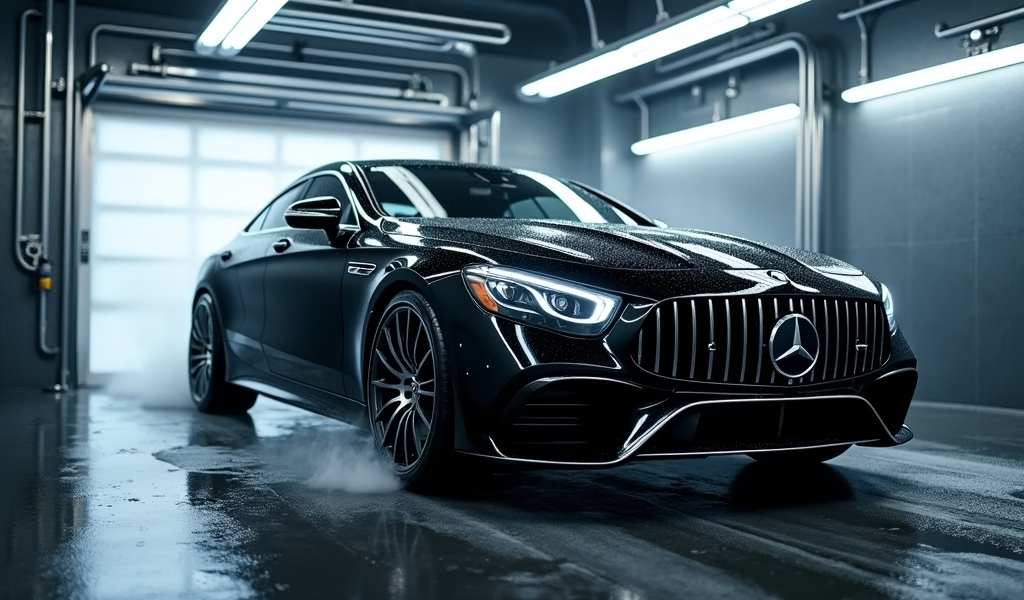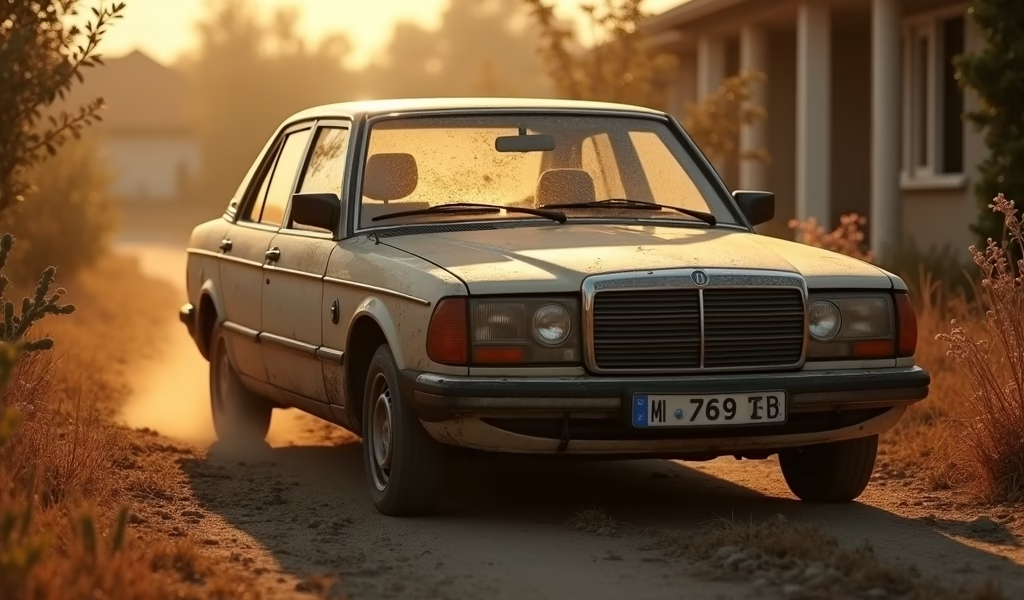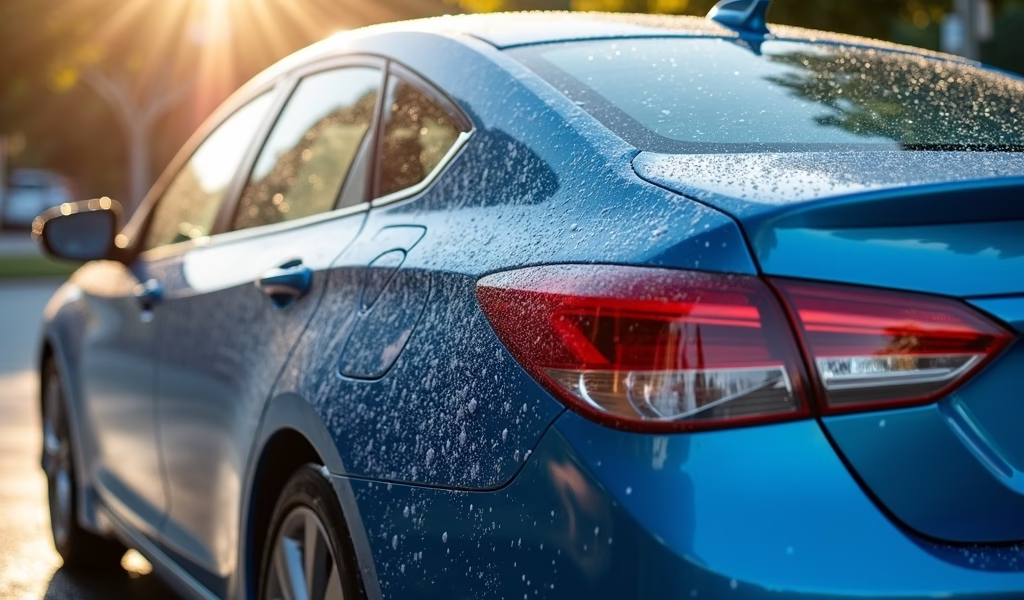Overview
This article provides seven specialized car washing and maintenance techniques for Austin’s unique climate conditions, including proper washing methods, seasonal frequency adjustments, and protection strategies against intense sun, pollen, and dust. It offers detailed guidance on the two-bucket washing method, drying techniques, paint protection options, and interior care tailored specifically for vehicles in Central Texas.
Table of Contents
- Introduction
- Choosing the Right Car Wash Method
- Washing Frequency for Austin Weather
- Pre-Wash Preparation Techniques
- Two-Bucket Washing Method
- Drying and Detailing Secrets
- Protection Strategies for Austin Weather
- Interior Care for Austin’s Climate
- Conclusion
- Frequently Asked Questions
Introduction
Austin’s unique environment presents distinct challenges for vehicle owners. The Texas capital’s persistent dust, seasonal pollen, and intense sun can quickly degrade your vehicle’s appearance and value if left unchecked. In this climate, proper car washing isn’t just cosmetic—it’s essential preventative maintenance.
As a mechanic with over 15 years of experience working in Austin’s automotive scene, I’ve seen firsthand how our local conditions affect vehicles. Whether you’re driving a rugged truck through Hill Country or keeping your luxury sedan pristine downtown, knowing how to properly wash your car in Austin’s specific environment makes all the difference.
This guide provides seven professional-grade car care tips specifically designed for Austin’s climate. I’ll share insights gained from years of restoring and maintaining vehicles in Central Texas that you won’t find in general car care advice. Let’s transform your car washing routine from a basic chore into a scientific approach that preserves your vehicle’s appearance and value for years to come.
Choosing the Right Car Wash Method
Finding the best car wash approach for your vehicle in Austin requires balancing convenience, quality, and environmental concerns. Each method has distinct advantages based on your vehicle’s needs and your personal preferences:
Self-Service Washes
Self-service bays give you complete control over how your vehicle gets cleaned. They’re ideal for targeting specific problem areas like wheel wells after off-roading or underbody cleaning during cedar pollen season. Most Austin locations charge $2-4 for basic washes, making them budget-friendly options.
The downside? You’re responsible for technique, and mistakes can damage your finish. Plus, on scorching summer days, working in an unshaded bay can be uncomfortable at best.
Automatic Car Washes
When time matters most, automatic washes offer efficiency. Modern touchless car washes use high-pressure water and specialized soaps instead of potentially damaging brushes. They’re perfect for regular maintenance washes, especially during oak pollen season when weekly cleaning becomes necessary.
For the best results, look for facilities that pre-rinse vehicles and use fresh water for final rinsing. H2O Car Wash on Burnet Road and Arbor Car Wash in North Austin both offer quality automatic options with minimal risk to your paint.
Professional Hand Washing
Nothing beats the attention to detail provided by professional hand washing services. These businesses employ trained staff who understand proper washing techniques and use specialized products. According to Consumer Reports, professional hand washing significantly reduces the risk of paint damage compared to improper DIY methods.
In Austin’s water-conscious environment, many professional services also use water reclamation systems. This makes them more environmentally responsible than driveway washing, which can send pollutants directly into storm drains.

Washing Frequency for Austin Weather
Austin’s distinct seasons demand a tailored approach to car washing frequency. Adjusting your washing schedule seasonally protects your vehicle from our region’s unique environmental challenges:
Spring (March-May)
Spring brings Austin’s infamous oak pollen season. That yellowish-green dust isn’t just annoying—it’s acidic enough to etch into your clear coat if left unwashed. During peak pollen weeks, weekly washing becomes necessary. Pay special attention to areas where pollen collects: windshield cowls, window channels, and around trunk seals.
After heavy pollen days, a quick rinse can prevent damage even before your scheduled wash. For those with dark-colored vehicles, the visibility of pollen makes this season particularly frustrating without regular maintenance.
Summer (June-September)
Austin summers bring intense UV exposure and occasional dust storms. Washing every two weeks protects your paint from baking contaminants into the finish. However, if your vehicle sits outdoors in full sun, consider increasing to weekly gentle rinses.
Summer is also construction season in Austin. If your daily commute takes you near construction zones (perpetually present on I-35 or MoPac), you might need more frequent washing to remove potentially damaging particulates.
Fall/Winter (October-February)
Austin’s milder fall and winter seasons generally allow extending to a three-week washing schedule. However, cedar fever season (December-February) introduces allergenic pollen that can be as problematic as spring oak pollen. If your car develops a greenish tint during these months, it’s time for a wash regardless of your regular schedule.
After Hill Country drives on limestone roads or trips to Hamilton Pool, give your vehicle a thorough rinse within 24 hours. The alkaline dust from these areas can create etching on your paint if allowed to remain too long.
Pre-Wash Preparation Techniques
Proper preparation before washing prevents the most common paint damage. These pre-wash techniques create a foundation for safe, effective cleaning:
Initial Rinse Down
Always begin with a thorough rinse to remove loose debris. Work from top to bottom, allowing gravity to carry particles away from clean surfaces. This prevents scratching during the washing process by removing anything that could act as an abrasive.
For vehicles with significant dust accumulation (common after Lake Travis visits or rural drives), use a gentle flow rather than high pressure. High pressure can drive particles into the paint rather than washing them away.
Wheel and Tire Cleaning
Always clean wheels and tires before touching paint surfaces. Use dedicated wheel cleaners appropriate for your wheel type—aluminum, chrome, and painted wheels each require specific formulations. Austin’s frequent stop-and-go traffic creates significant brake dust, making this step essential.
For heavily soiled wheels, an assortment of detail brushes helps reach between spokes and behind brake calipers. Clean each wheel completely before moving to the next to prevent cleaning solutions from drying on the surface.
Pre-Wash Treatments
For vehicles with substantial contamination, pre-wash detailing products create a significant advantage. Foam cannons apply thick cleaning solutions that cling to vertical surfaces, softening contaminants before contact washing. This dramatically reduces the potential for washing-induced scratches.
Bug and tar removers applied to affected areas (typically front bumpers, mirrors, and leading edges) before washing saves aggressive scrubbing later. Allow these products several minutes to penetrate before the main wash for best results.
Two-Bucket Washing Method
The two-bucket method stands as the gold standard for safe hand washing. This technique dramatically reduces swirl marks and scratches by preventing contamination during the wash process:
Setup and Supplies
You’ll need two identical buckets (preferably with grit guards), a high-quality microfiber wash mitt, pH-neutral car shampoo, and several microfiber drying towels. Mark your buckets clearly—one for soapy water, one for rinsing the mitt.
Grit guards are plastic inserts that sit at the bottom of each bucket. They allow dirt to settle beneath the guard while preventing your mitt from reaching the contaminated water. In Austin’s dusty environment, this small investment pays significant dividends in paint protection.
The Washing Process
Start with a thoroughly rinsed vehicle. Fill your wash bucket with the manufacturer-recommended amount of car shampoo and your rinse bucket with clean water. Always work from top down, cleaning in straight lines rather than circles.
After washing each section (approximately 2×2 feet), rinse your mitt thoroughly in the rinse bucket before reloading with soap solution. This prevents transferring contaminants from lower areas to cleaner upper panels. Professional detailers recommend changing water in both buckets halfway through washing larger vehicles.
Common Mistakes to Avoid
Never use dish soap on automotive finishes. While effective at removing grease, these products strip protective waxes and sealants. In Austin’s harsh environment, this leaves your paint vulnerable to damage.
Avoid washing in direct sunlight whenever possible. On hot surfaces, soap dries quickly, leaving residue that can etch into your clear coat. Early morning or evening washing provides better results and more comfortable working conditions, especially during our triple-digit summer days.

Drying and Detailing Secrets
Proper drying technique prevents water spots, a particular concern with Austin’s mineral-rich water. These professional methods ensure spot-free results:
Drying Techniques
The “pat and drag” method works best for most vehicles. Place a clean, plush microfiber towel flat against the surface, press gently, then drag in a straight line. This lifts water without scrubbing, which can create micro-marring visible in direct sunlight.
For large, flat surfaces like hoods and roofs, drying aids provide significant advantages. These spray products break surface tension, allowing water to sheet off rather than beading. They also add light protection while making drying faster and safer.
Dealing with Water Spots
Austin’s hard water can leave stubborn mineral deposits if allowed to air dry. For fresh water spots, a mixture of distilled white vinegar and distilled water (1:1 ratio) safely dissolves deposits without damaging clear coats. Apply with a microfiber cloth, allow brief dwell time, then wipe clean.
For established water spots, commercial water spot removers containing mild polishing agents may be necessary. Professional detailing resources recommend starting with the gentlest solution and progressively increasing strength only as needed.
Quick Detailing Between Washes
During Austin’s dusty seasons, quick detailer sprays maintain appearance between full washes. These products contain mild cleaners and polymers that encapsulate dust particles for safe removal. They’re perfect for maintaining your vehicle after a day at Zilker Park or an evening on South Congress.
For the best results, use clean, plush microfiber towels and fold to fresh surfaces frequently. This prevents captured particles from causing scratches during the detailing process. Most quick detailers also add UV protection, particularly valuable in our sun-intensive environment.
Protection Strategies for Austin Weather
Protection products create a barrier between your paint and Austin’s harsh elements. Choosing the right product for your situation maximizes both appearance and longevity:
Waxes and Synthetic Sealants
Traditional carnauba waxes provide warm, deep shine with modest protection. They excel on show vehicles but require reapplication every 4-8 weeks in Austin’s climate. Their organic nature means they deteriorate more quickly under intense UV exposure.
Synthetic sealants offer extended protection—typically 3-6 months even in Austin summers. Their engineered polymers create stronger bonds with paint and superior resistance to heat and UV radiation. For daily drivers, synthetic sealants like Jescar Power Lock or Menzerna Power Lock provide an excellent balance of protection and appearance.
Ceramic Coatings
Professional ceramic coatings represent the ultimate protection for Austin vehicles. These silicon dioxide-based products chemically bond with paint, creating a hydrophobic barrier lasting 2-5 years with proper maintenance. They excel at repelling water, preventing dust adhesion, and resisting UV damage.
While significantly more expensive initially ($500-1500 for professional application), their longevity makes them economically competitive with regular waxing. For vehicles regularly parked outdoors or driven daily, ceramic coatings provide the most comprehensive protection against Austin’s environmental challenges.
Maintenance Routines
Even the best protection requires maintenance. Quarterly paint inspection helps identify protection failures before damage occurs. Look for areas where water no longer beads or where contaminants seem to adhere more readily.
For vehicles with ceramic coatings, specialized maintenance sprays enhance hydrophobic properties and extend protection. These products require minimal effort—simply spray on a clean, wet vehicle during the drying process—yet provide significant performance benefits.
Interior Care for Austin’s Climate
Austin’s climate affects vehicle interiors just as dramatically as exteriors. These specialized techniques preserve interior materials despite challenging conditions:
UV Protection
Dashboard temperatures can exceed 160°F during Austin summers, accelerating deterioration of vinyl and plastic components. UV protectants containing UVA/UVB blockers prevent cracking, fading, and discoloration of these surfaces.
Apply protectants quarterly to dash, door panels, and console surfaces. Products like 303 Aerospace Protectant or Meguiar’s Ultimate Protectant leave a natural finish without excessive shine or greasy residue. For convertibles or vehicles with large sunroofs, increase application frequency to every six weeks during summer.
Leather Care
Leather upholstery requires special attention in Austin’s dry heat. Quarterly cleaning and conditioning prevents the dehydration that leads to cracking and premature aging. Look for pH-balanced cleaners and conditioners containing UV inhibitors specifically formulated for automotive leather.
For vehicles with perforated leather (common in ventilated seats), use minimal product and apply with a microfiber applicator rather than spraying directly. This prevents conditioning agents from clogging ventilation systems while still providing necessary protection.
Air Quality Maintenance
Austin’s notorious allergens affect in-cabin air quality. Replace cabin air filters every 15,000 miles or annually, whichever comes first. During cedar or oak pollen seasons, consider upgrading to HEPA-rated filters that capture smaller particulates.
Periodic HVAC system cleaning prevents mold and bacteria growth in evaporator cores—a common issue in Austin’s humidity. Professional cleaning services use antibacterial foggers that reach areas inaccessible through DIY methods.
Conclusion
Proper car care in Austin requires understanding our unique environmental challenges. By implementing these seven professional tips, you’ll maintain your vehicle’s appearance and value despite Central Texas’ punishing conditions. From choosing the right washing method to applying appropriate protection, each step builds toward comprehensive care tailored to Austin’s specific needs.
Remember that consistency matters more than perfection. Establishing a regular maintenance routine prevents minor issues from becoming costly problems. Whether you’re preserving a weekend showpiece or maintaining a daily commuter, these specialized techniques provide meaningful protection against Austin’s harshest elements.
Start by implementing one new technique each wash until you’ve created a complete routine. Your vehicle will reward your efforts with enduring appearance, higher resale value, and pride of ownership that makes every drive more enjoyable.
Frequently Asked Questions
What’s the best time of day to wash my car in Austin?
Early morning or evening hours are ideal to avoid direct sunlight. Washing when temperatures are below 85°F prevents soap from drying too quickly and causing water spots.
How often should I wax my car in Austin?
Apply traditional wax every 6-8 weeks during summer and every 8-12 weeks during winter. Synthetic sealants can extend this interval to 3-4 months with proper maintenance.
Are touchless car washes better than brush washes in Austin?
Touchless washes are generally safer for your paint as they eliminate the risk of brush-induced scratches. They’re particularly valuable during high pollen seasons when contaminants can become trapped in brush systems.
How can I remove stubborn water spots from Austin’s hard water?
For fresh spots, use equal parts distilled vinegar and water; for older spots, use a dedicated water spot remover with light polishing capabilities. Always follow with protection to prevent recurrence.
What’s the most cost-effective protection against Austin’s sun damage?
Synthetic paint sealants offer the best balance of protection and value, lasting 4-6 months with proper maintenance. They provide excellent UV and heat resistance at a fraction of ceramic coating costs.

